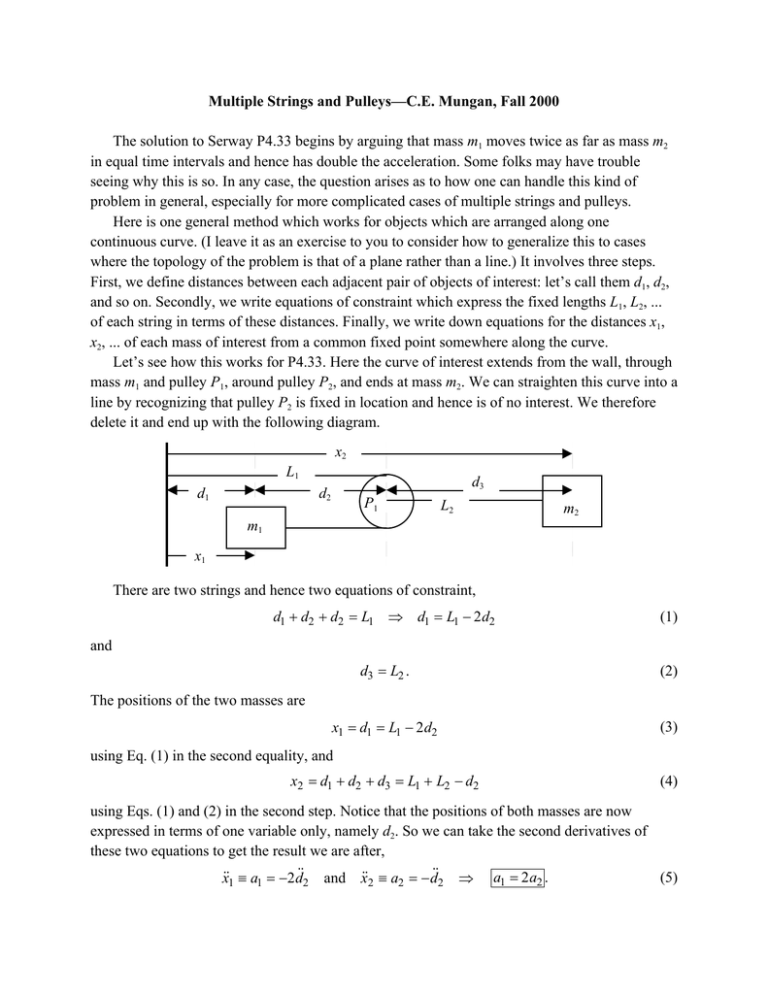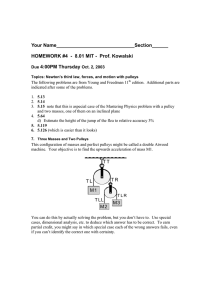Multiple Strings and Pulleys—C.E. Mungan, Fall 2000 m
advertisement

Multiple Strings and Pulleys—C.E. Mungan, Fall 2000 The solution to Serway P4.33 begins by arguing that mass m1 moves twice as far as mass m2 in equal time intervals and hence has double the acceleration. Some folks may have trouble seeing why this is so. In any case, the question arises as to how one can handle this kind of problem in general, especially for more complicated cases of multiple strings and pulleys. Here is one general method which works for objects which are arranged along one continuous curve. (I leave it as an exercise to you to consider how to generalize this to cases where the topology of the problem is that of a plane rather than a line.) It involves three steps. First, we define distances between each adjacent pair of objects of interest: let’s call them d1, d2, and so on. Secondly, we write equations of constraint which express the fixed lengths L1, L2, ... of each string in terms of these distances. Finally, we write down equations for the distances x1, x2, ... of each mass of interest from a common fixed point somewhere along the curve. Let’s see how this works for P4.33. Here the curve of interest extends from the wall, through mass m1 and pulley P1, around pulley P2, and ends at mass m2. We can straighten this curve into a line by recognizing that pulley P2 is fixed in location and hence is of no interest. We therefore delete it and end up with the following diagram. x2 L1 d1 d3 d2 P1 L2 m2 m1 x1 There are two strings and hence two equations of constraint, d1 + d2 + d2 = L1 ⇒ d1 = L1 − 2 d2 (1) d3 = L2 . (2) x1 = d1 = L1 − 2 d2 (3) and The positions of the two masses are using Eq. (1) in the second equality, and x2 = d1 + d2 + d3 = L1 + L2 − d2 (4) using Eqs. (1) and (2) in the second step. Notice that the positions of both masses are now expressed in terms of one variable only, namely d2. So we can take the second derivatives of these two equations to get the result we are after, (5) x˙˙1 ≡ a1 = −2 d˙˙2 and x˙˙2 ≡ a2 = − d˙˙2 ⇒ a1 = 2 a2 .


